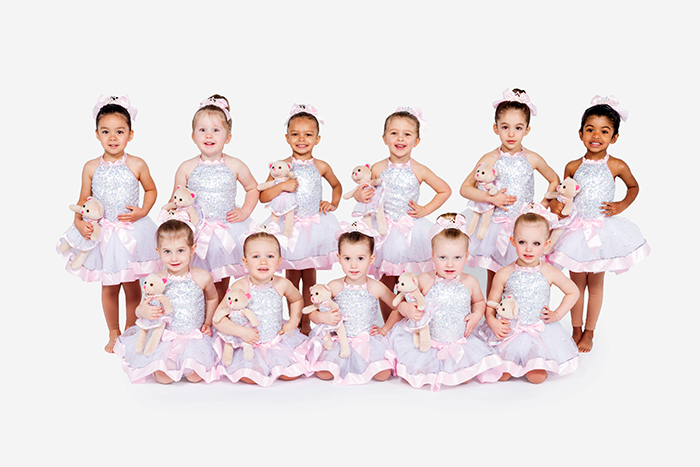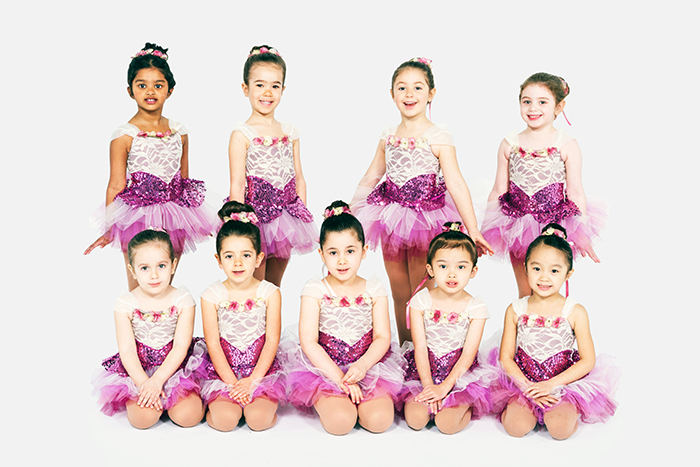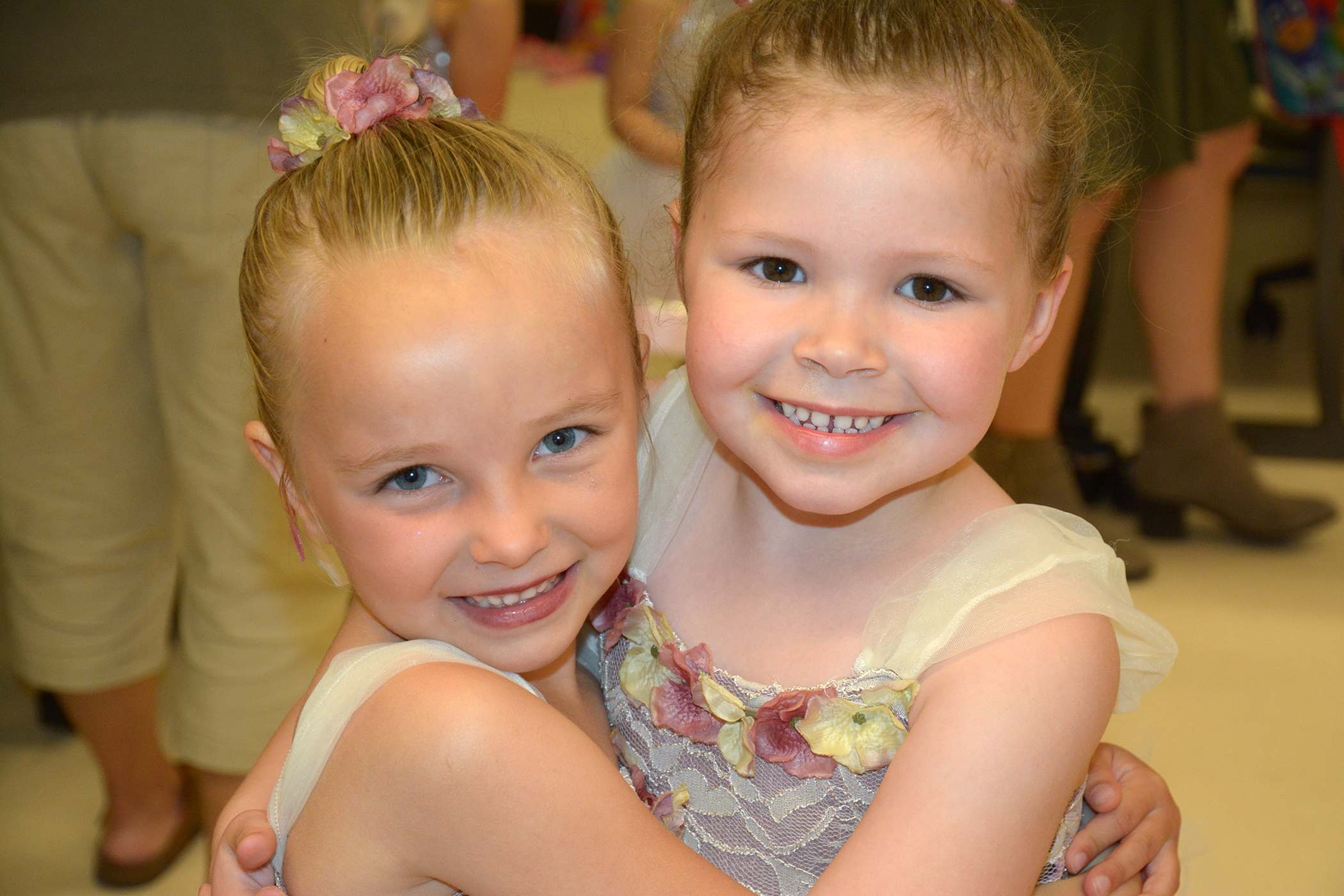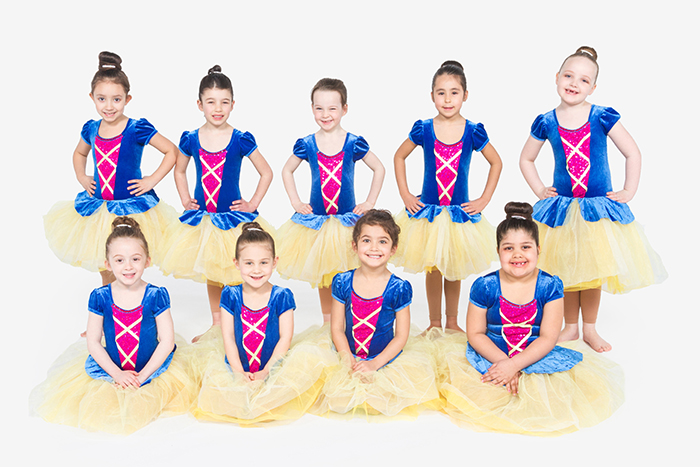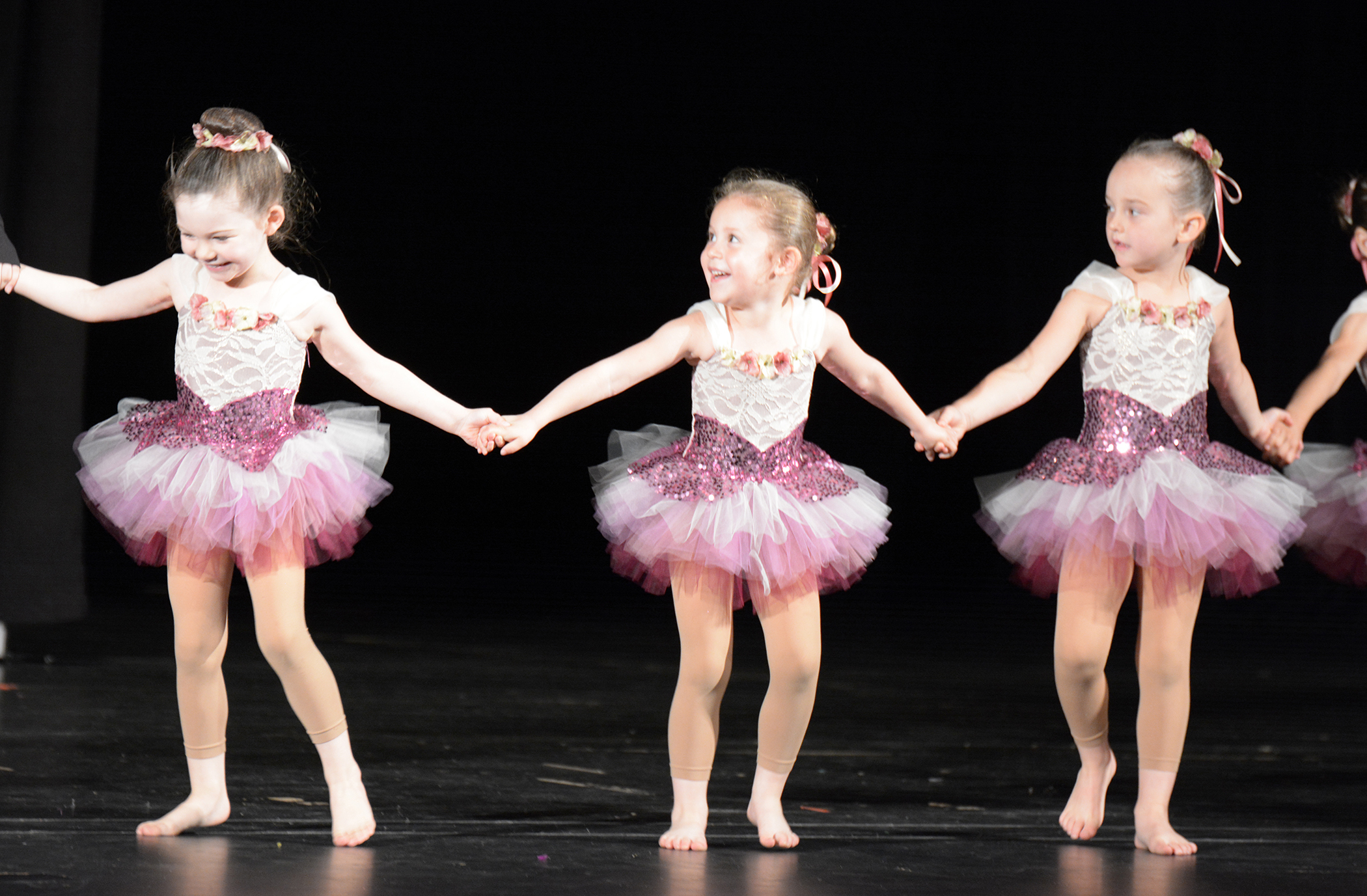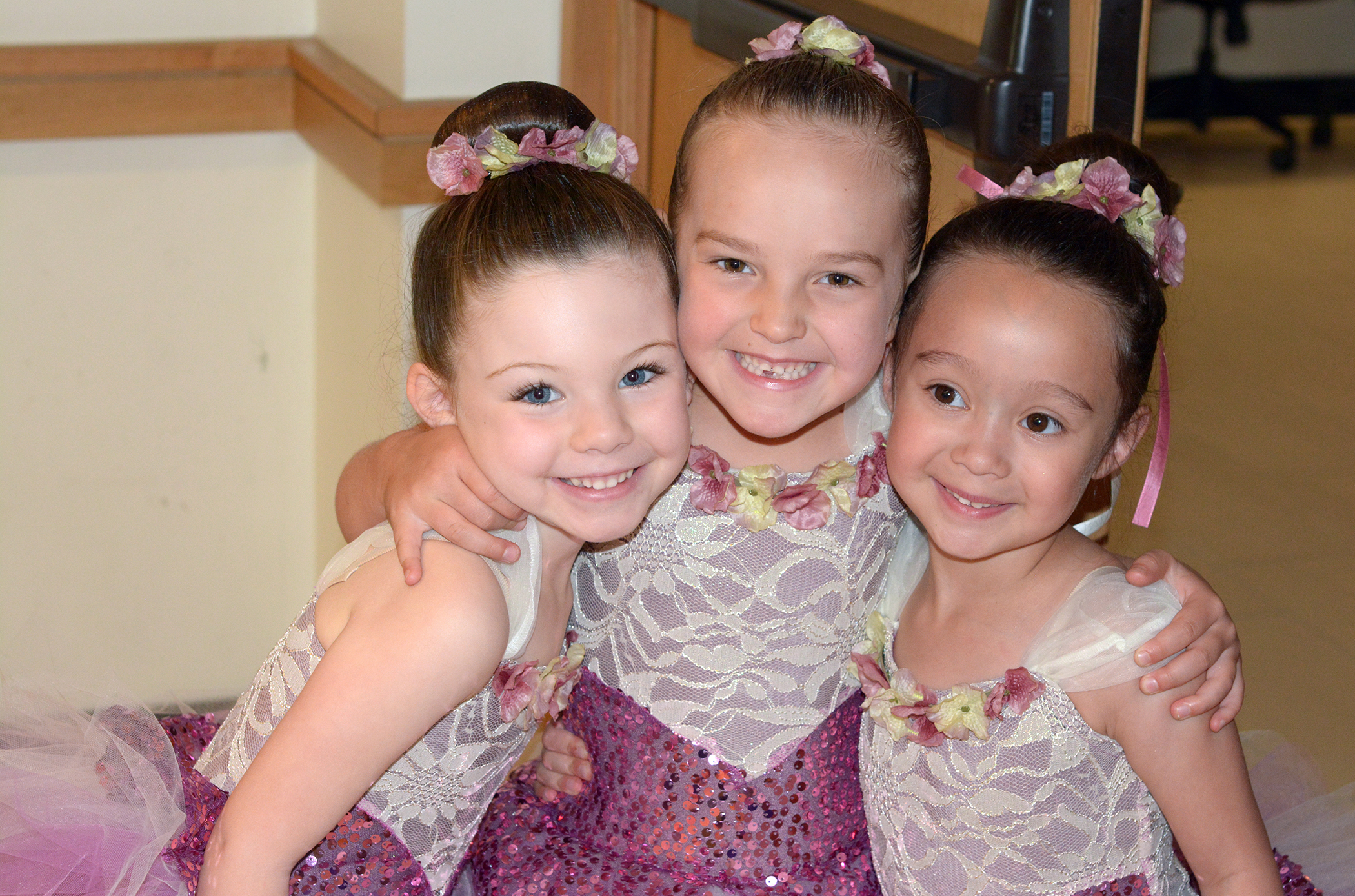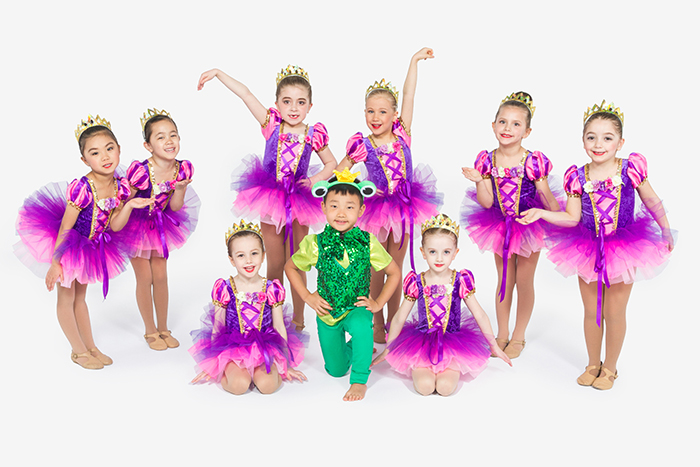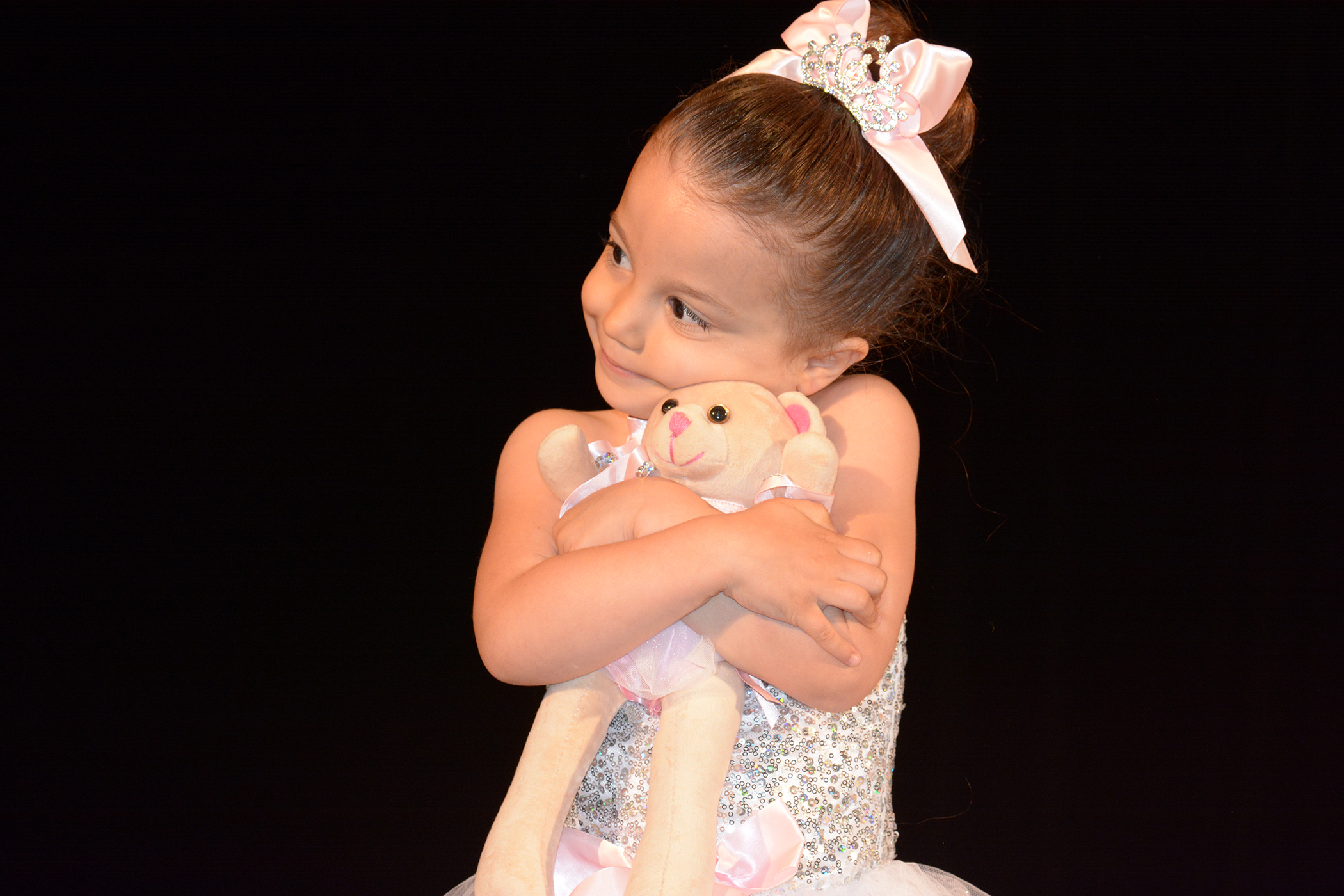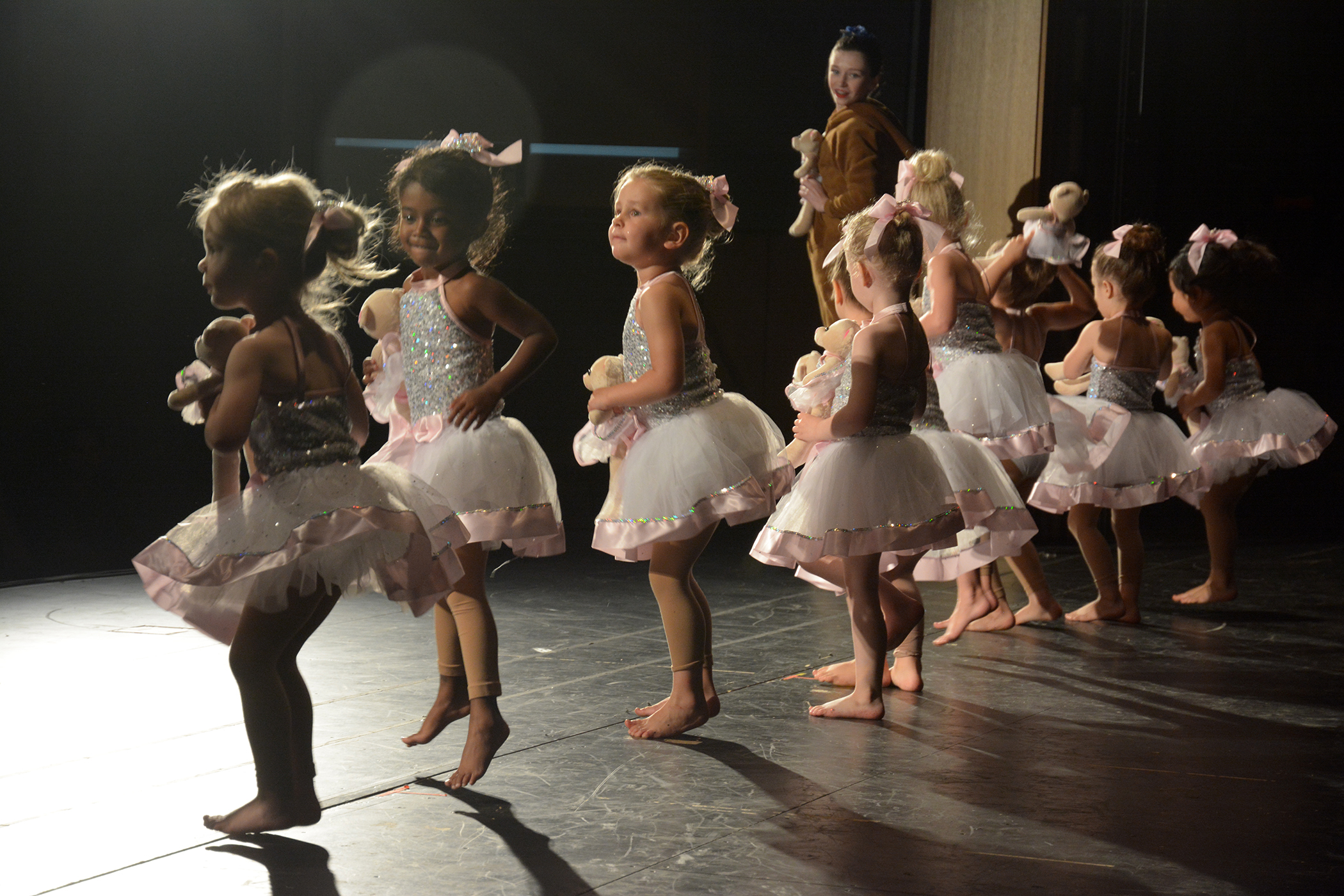KINDERDANCE
KINDERDANCE SCHEDULES
Our KinderDance programs are a fun, creative, play-based introduction to the world of dance. These classes are taught by experienced dance faculty with post-secondary dance education, in a safe and welcoming environment.
One of the most important aspects of our KinderDance programming is that we do not mix age groups. While it is common practice for dance schools to group 3-5 year olds in a single class, any parent knows that the development and abilities of a 3 year old compared to a 5 year old is significant. We instruct our youngest students by school grade - pre-JK, JK, SK - all in individual classes to ensure the instruction is designed specifically for their abilities. Our KinderDance rooms are equipped with closed circuit cameras so you can watch and enjoy your KinderDancer in action without challenging their ability to stay focused and engaged.
Our KinderDance program is a full-season program beginning in September and culminating in the year-end performances at the recital in June. We do not offer short-term programs. Our experience has taught us that children at this age often need time to adjust to something new, and need time to develop skills and achievements. This can rarely be accomplished in eight weeks. Dance is a performance art and being on stage is a rewarding and thrilling experience for even the youngest of dancers.
KINDERDANCE CLASS DESCRIPTIONS
The primary goal of the KinderDance Program is to introduce and foster a love of movement and dance. Specifically designed with the young dancer in mind, our KinderDance classes are taught with emphasis on creative expression and physical awareness.
KinderDance First Steps*
This program is a wonderful First Step into the exciting world of dance for students 2 - 2 1/2 years old, just developing their coordination. Our highly qualified and caring instructors will be your child’s guide as they take there First Steps into a structured activity without Mom or Dad. This class is an excellent first group activity and is structured in a way that makes discovering movement, balance and listening skills easy and fun. Take the First Steps towards introducing your child to dance and physical activity as a healthy lifestyle habit! *KinderDance First Steps students do not participate in the year end recital
KinderDance 1 (pre-JK in September 2022)
This program is a wonderful introduction into dance and performance for students 3 years old. Students gain skills in rhythm, coordination, alignment, and centering, in these fun and rewarding creative movement classes. A great way for young children to learn to express themselves, take risks, and increase self-confidence.
KinderDance 2 (JK in September 2022)
Here students 4 years old are encouraged to build on the skills developed in KinderDance 1, furthering their body and space awareness, introducing left/right/opposite skills and continuing to explore basic strength and flexibility exercises.
KinderDance 3 (SK in September 2022)
The goals of KinderDance 3 are to continue to foster creativity, freedom and expression in movement, and to begin the exploration of the concepts that are found in an older child’s dance class as they prepare for ‘graduation’ from our KinderDance Program.
KINDERDANCE GOALS
Traditional dance is taught, but sometimes it is best introduced in non-traditional ways. Each class blends a variety of exercises to enhance the following skills:
Creativity
It may look like they’re playing, but learning about shape while molding their bodies to look like they're a tree, discovering space while playing our dance games, teaches your child about concepts of movement through space. Studies prove creative dance is the most beneficial form of dance training for children under 7, and we take this theory to new heights. Self-expression and physical exploration are discovered with creative exercises that teach traditional dance concepts in non-traditional ways. We make dance a theatrical adventure for your child.
Coordination
Within a fun and energetic atmosphere, we insert exercises for posture to make learning to move with grace and control easy and natural. Physical conditioning and body development improve as your child works on safe exercises, stressing physical awareness and coordination. We make sure your child's dance education is complete without the need for harsh discipline or mundane repetition. Dance is embraced as a joyful experience, making your child ready for more structure and personal discipline after their basics are learned.>
Basic Dance Skills
Learning serious dance does not have to be serious. We are committed to teaching dance in a positive way and this encourages us to teach the basics with imagery and creative methods. With props and games, we introduce dance terms and basic technique. Your child will learn his/her basics, camouflaged in activities which are inspirational and fun. As they grow they, will embrace the discipline and challenge of dance out of the love for the craft.
Musicality and Rhythm
All music used in KinderDance classes is pre-selected to assure every song is age-appropriate and inspirational for the children enrolled. Music awareness is encouraged as your child is introduced to a variety of music from classical, upbeat instrumentals and reggae, to jazz, Broadway tunes and pop. Of course, children's favorites like Disney songs and other popular children's artists are used as well, to make every class an adventure.
Uninterrupted Creative Time
For all dancers there is a time to perform and a time to be self absorbed, learning about the body through the pleasure and freedom of movement. Classes are closed to visitors. Parents are asked to wait outside the classroom to free the children to take risks with movement, to focus on their feelings and to perform for themselves, not for others.
Concentration, focus and understanding are easier for students when the class can proceed without interruption. We make every class focused by closing out the outside world to make dance the center of attention.
The Best Dance Introduction
Here at the Stouffville Academy, we want every child's introduction to dance to be a positive one, and this means respecting each student's independent learning styles. Some children learn by watching, and others will joyfully jump in to try something new. Whatever your child's learning style, we will work to make them comfortable with initiating this new activity. We believe in giving a child time to learn the beauty and impact of dance. After developing an appreciation and sincere love for the art, it is easy to teach children dance discipline and technique.
Learning When Ready
Often children need to know what is expected of them or need time to adjust to a new space or teacher so they will feel safe or comfortable. We never force or push a child to dance, because a great dance experience is born of an individual's desire to participate. If your child initially needs time to just watch when new exercises are introduced, don't be alarmed. They are still learning, just taking their time, deciding how they feel about the experience. We feel patience and encouragement will always lead to a healthy love for dance.
Respecting Dance
From the first moment a dancer steps into the studios, we teach them to honour and respect dance. Proper dance class etiquette is observed and respect for others is encouraged. Listening and following directions are the first steps toward learning. Students are expected to participate in all the activities and are not allowed to wander around the room or distract others. Learning to dance is not about "discipline" but about "self-discipline". Self-discipline is the path to success in all areas of life. We are firm about proper behavior in class because, with focus and self-control, we create an atmosphere where creativity can surface and bloom.
Parent's Part
We believe an important facet of dance education is teaching the parents about dance as well, so they can make appropriate choices for their child's training. As parents learn about dance, they are better able to guide their child to better class choices and can share in the discovery of dance with their child. We are available anytime to discuss your child's needs and to help with placement or study recommendations.
KINDERDANCE FAQs
A lot of this sounds like play. Why is this done?
During these early years, children have a very short attention span. As dance educators, we must engage the children in activities that capture their imagination. We disguise the lessons in games that the children enjoy repeating. The children then learn the age-appropriate skills in a way that is enjoyable and encourages them to want to learn new skills.
Why isn’t my child’s class like a traditional ballet (jazz, hip hop, etc.) class?
Two reasons. The first is for the child’s safety. The study of classical ballet for instance, requires a certain muscle strength that children at this age do not yet have. Asking them to perform movements beyond their capabilities could cause damage to their young bones and ligaments. The second reason is boredom. Children at this age are not ready to work at the level of detail and concentration required for ballet movements. Instead, we focus on developing all of the movement skills which will prepare them to move on to ballet, jazz, hip hop or tap classes.
My child seems very advanced for her/his age. Can she/he be moved up to the next level?
The skills that are presented in each level of the KinderDance curriculum are designed with the learning skills and attention span of each age group in mind. Yes, some children will learn skills faster than others, however rushing them at this age has no benefit and can actually be detrimental. A child’s sense of self-confidence is built during these early lessons. A child who learns certain age-specific skills easily is learning to feel good about their ability to learn. Moving such a child to a level where the expectation is beyond the child’s developmental abilities can lead to frustration and undermine the developing sense of self esteem.
Why can’t I come into my child’s class?
There are a few reasons for this. One of the skills needed to participate in a dance class is the ability to focus on the teacher. Another is to be able to work together as a group with other children. In order to facilitate this, and because we understand that staying focused can be a challenge at this age, we keep distractions to a minimum. Only the teacher and her assistant are allowed into class on a regular basis. Our goal is to create a safe supportive space where students feel comfortable and free to take chances while exploring their own movement potential. Audiences create an environment where students feel they are 'on the spot' to perform, which is stressful when practicing, and sometimes struggling with, new skills. Although your child may feel comfortable with you watching, other students will not, and our responsibility is to the class as a whole. Our offices are equipped with closed-circuit TVs so you can watch your dancer learn and grow and our young students can participate without distraction.
What can I expect my child to learn in KinderDance?
When planning lessons for this age group, there are many skills that must be taught. Over the course of the year each age group will work on developmentally appropriate skills in the following areas:
Listening
Looking
Concentration
Control
Co-ordination
Body awareness
Space awareness
Space orientation
Shape understanding
Loco-motor
Movement
Flexibility
Strength
Feet exercises
Right and left skills
Posture & stance
Dance vocabulary
Hand movement
Head movement
Arm movement
Musicality
Musical quality
Energy & dynamics
Action skills
Patterning
Interactive skills
Improvisation skills
Mime skills
Turn-taking
Sharing
Memory skills
Social skills
Stouffville Academy of Music & Dance, 86 Ringwood Dr., Unit 204, 2nd Floor, Stouffville (905) 640-9337.
© Stouffville Academy of Music & Dance. All rights reserved.

